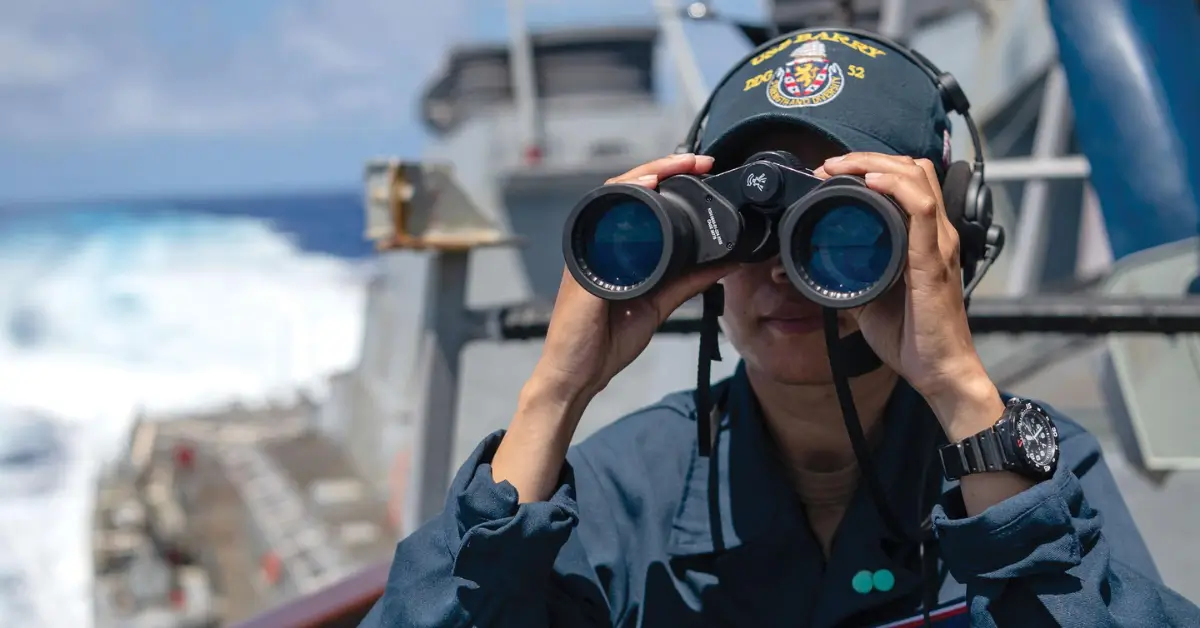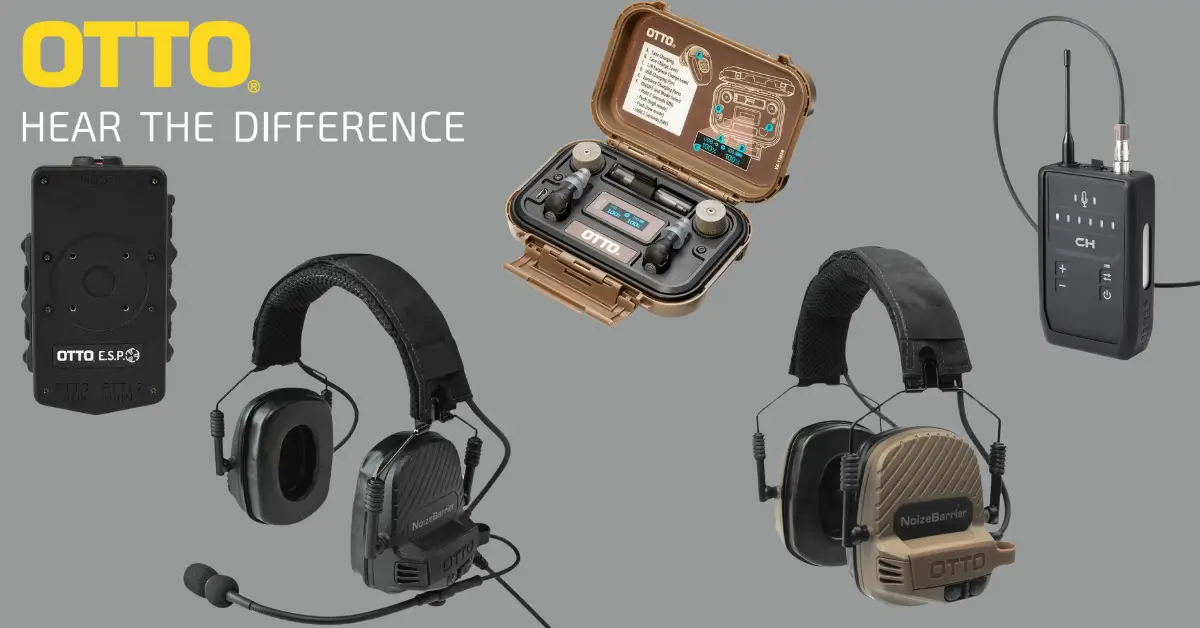Superior daytime optics and devices are crucial for military and law enforcement operational success. They enhance situational awareness, target acquisition, and decision-making. This guide helps professional purchasers understand the ins and outs of selecting the best daytime optics to empower mission readiness.
Understanding Daytime Optics and Devices
Daytime optics and devices encompass various tools that enhance vision and precision during daylight operations. These include binoculars, spotting scopes, and riflescopes. Each type offers unique features and applications, making informed procurement decisions essential. Let’s start with an explanation of the different terminology.
Glossary of Terms
- Ballistic Coefficient (BC): A measure of a bullet’s resistance to air resistance during flight. Ballistic reticles often incorporate BC information for accurate long-range shooting, helping shooters compensate for bullet drop and wind drift.
- Close Focus: The closest distance the optic can focus on an object. A short, close focus distance is beneficial for viewing nearby objects in detail.
- Dielectric Coating: A reflective coating applied to prisms in binoculars or spotting scopes that enhances light transmission for brighter images. This coating improves overall image brightness and clarity.
- ED (Extra-low Dispersion) Glass: This is an optical glass that minimises chromatic aberration, producing sharper images with improved colour fidelity. ED glass is essential for high-quality optics, providing clearer and more accurate colour reproduction.
- Exit Pupil: The diameter of the light beam exiting the eyepiece, measured in millimetres. A larger exit pupil allows more light to reach the eye, resulting in a brighter image, especially in low-light conditions.
- Eye Relief: The distance between the eyepiece and the point where a clear image is visible, measured in millimetres. Proper eye relief is crucial for comfortable viewing and prevents eye strain, which is especially important for users wearing glasses.
- Field of View (FOV): The angular width of the area observable through the optic, typically measured in feet at 1,000 yards or meters at 1,000 meters. A wider FOV allows for quicker target acquisition, while a narrower FOV provides a more magnified view.
- Gyro Image Stabilisation: A technology that reduces image shake caused by movement, particularly useful in dynamic scenarios. Gyro image stabilisation provides significant advantages for maintaining a stable and clear view, especially during hand-held use or on moving platforms.
- Magnification: The ability of the optic to enlarge the apparent size of a distant object. This is usually expressed as a number followed by “x,” indicating how many times closer the object appears compared to the naked eye.
- Objective Lens Diameter: The diameter of the front lens in millimetres, which determines the light-gathering capability and overall image brightness. Larger diameters allow more light, resulting in brighter images.
- Parallax Error: The apparent movement of the reticle relative to the target when the shooter’s eye moves behind the scope. Proper parallax adjustment is essential for precise aiming, especially at longer ranges.
- Phase Coating: A special coating applied to binocular roof prisms to enhance resolution and contrast by correcting phase shift, resulting in clearer and more detailed images.
- Reticle: The aiming point(s) etched or inscribed within the riflescope’s optical path used for precise target acquisition. Types include duplex, mil-dot, BDC (Bullet Drop Compensator), and illuminated reticles.
- FFP (First Focal Plane) Reticles: These reticles are placed towards the front of the scope’s magnifying lenses. The reticle size changes proportionally with the target image as the magnification increases or decreases. This ensures that the reticle’s subtensions (distance between markings) remain consistent at all magnifications, which is beneficial for range estimation and ballistic calculations at any power setting.
- SFP (Second Focal Plane) Reticles: These reticles are located behind the magnifying lenses, meaning the reticle size remains constant regardless of magnification changes. While this provides a consistent and easily visible aiming point at all magnifications, the subtensions are only accurate at one specific magnification, typically the highest power. This can be simpler for general purposes but less versatile for precise long-range shooting.
Types of Daytime Optics and Devices
Binoculars
Usage: Surveillance, reconnaissance, and general observation.
Key Features:
- Magnification: Brings distant objects closer.
- Objective Lens Diameter: Determines light-gathering ability.
- Field of View (FOV): The observable area width through the binoculars.
- Image Stabilisation: Reduces image shake, which is especially important in dynamic scenarios where gyro image stabilisation can provide significant advantages.
Considerations:
- Portability: Compact models are more accessible to carry but might offer lower magnification.
- Durability: Waterproof and shock-resistant designs are preferable.
Advanced Features:
- Phase Coating: Improves image contrast and resolution.
- Dielectric Coating: Enhances light transmission for brighter images.
- Close Focus: Allows for focusing on very close objects.
Spotting Scopes
Usage: Long-range observation and target identification.
Key Features:
- Magnification: Higher than binoculars, typically 20-60x.
- Objective Lens Diameter: Larger lenses for better light transmission.
- Angled vs. Straight Eyepiece: Angled for prolonged viewing; straight for quick target acquisition.
- Image Stabilisation: Reduces image shake, enhancing the accuracy of long-range observation, particularly beneficial with gyro image stabilisation.
Considerations:
- Tripod Compatibility: Stability is crucial at high magnifications.
- Weather Resistance: Essential for outdoor use.
Advanced Features:
- Internal Focusing: Protects the objective lens and allows for adjustments without extending it.
- ED (Extra-low Dispersion) Glass: Minimises chromatic aberration for sharper, more authentic colours.
Riflescopes
Usage: Precision targeting and shooting.
Key Features:
- Magnification Range: Variable magnification for versatile use.
- Reticle Type: Aiming points; options include duplex, mil-dot, and illuminated.
- Adjustment Turrets: For precise windage and elevation adjustments.
- Durability: Should withstand recoil and tough conditions.
Considerations:
- Mounting Compatibility: Ensure it fits the weapon system.
- Eye Relief: Comfort and safety aspect, distance from eye to scope.
Advanced Features:
- Ballistic Reticles: Compensate for bullet drop and wind drift.
- FFP vs. SFP Reticles: FFP maintains size relative to target at all magnifications.
- Illuminated Reticles: Enhance visibility in low-light conditions.
- Parallax Adjustment: Eliminates parallax error for precise aiming.
- Zero Lock: Locks windage and elevation adjustments to prevent accidental changes.
Key Considerations for Procurement
Mission Requirements
- Define specific needs based on operational scenarios (urban, forest, desert).
- Consider typical engagement distances and environmental conditions.
Optical Performance
- Evaluate clarity, brightness, and colour fidelity.
- Assess performance in various lighting conditions, including low light.
Durability and Reliability
- Ensure optics withstand harsh conditions and rough handling.
- Look for waterproofing, fog-proofing, and shock resistance.
Ergonomics and Usability
- Ease of handling and comfort during extended use.
- User-friendly features like adjustable eyecups and intuitive controls.
Integration with Other Equipment
- Ensure compatibility with current gear, including mounting systems and ballistic calculators.
Cost and Value
- Balance cost with value provided by features and durability.
- Consider long-term investment and maintenance costs.
Evaluation and Testing
- Field Testing: Conduct field tests to assess performance in operational environments. Gather feedback from users on usability and effectiveness.
- Comparative Analysis: Compare multiple models side-by-side to highlight performance and feature differences.
Manufacturer Support
- Availability of warranties, repair services, and customer support.
- Preference for manufacturers with a reputation for reliability.
Partnering with Trusted Suppliers
Collaborating with reputable suppliers ensures access to high-quality optics and expert advice.
Empowering Mission Success with Optimal Daytime Optics Selection
Selecting suitable daytime optics enhances operational effectiveness and mission readiness. Professional purchasers can make informed decisions by understanding the different types of optics, key features, advanced features, and procurement considerations. Focus on quality, durability, and performance and partner with trusted suppliers to equip military and law enforcement personnel with the best tools for their operations.
If you need further consultation or want to discuss your specific daytime optics needs, please get in touch with MSS Defence today. Our team of experts can assist you in selecting the right equipment to enhance the success of your mission. Our specialty includes Fujinon gyro image stabilisation solutions, which offer unparalleled stability and accuracy for your optics.



